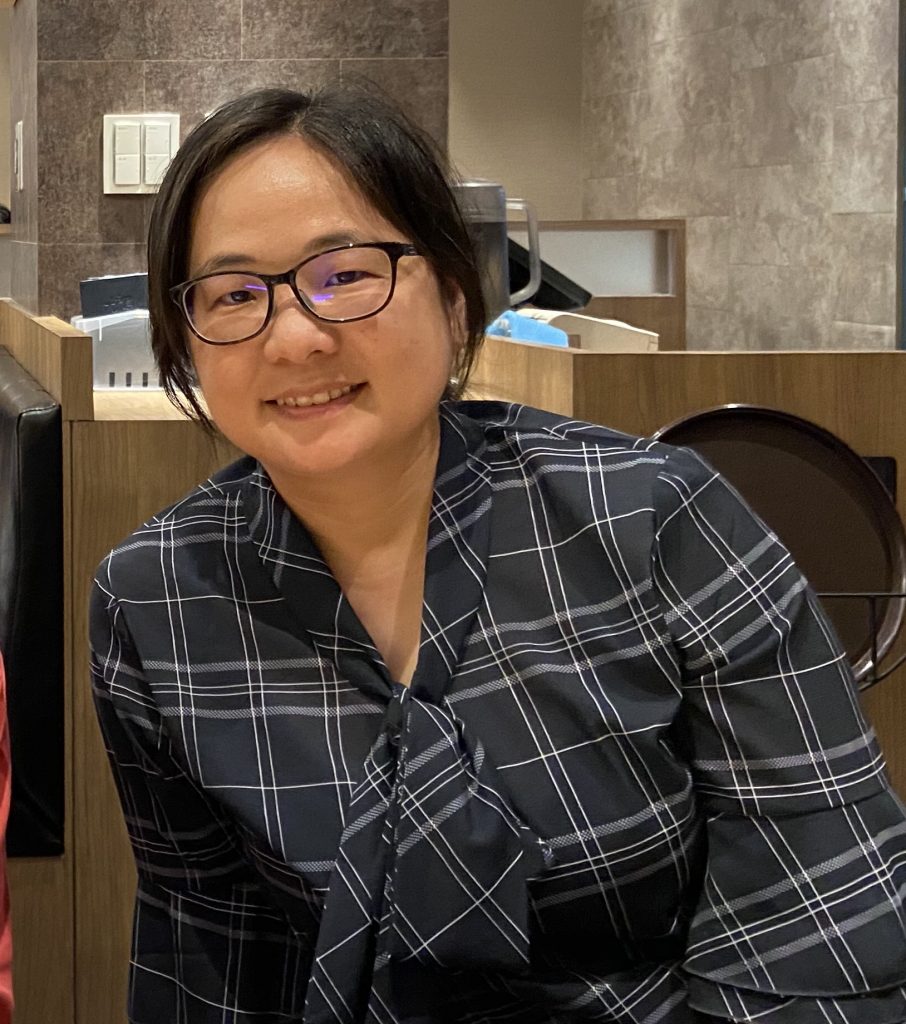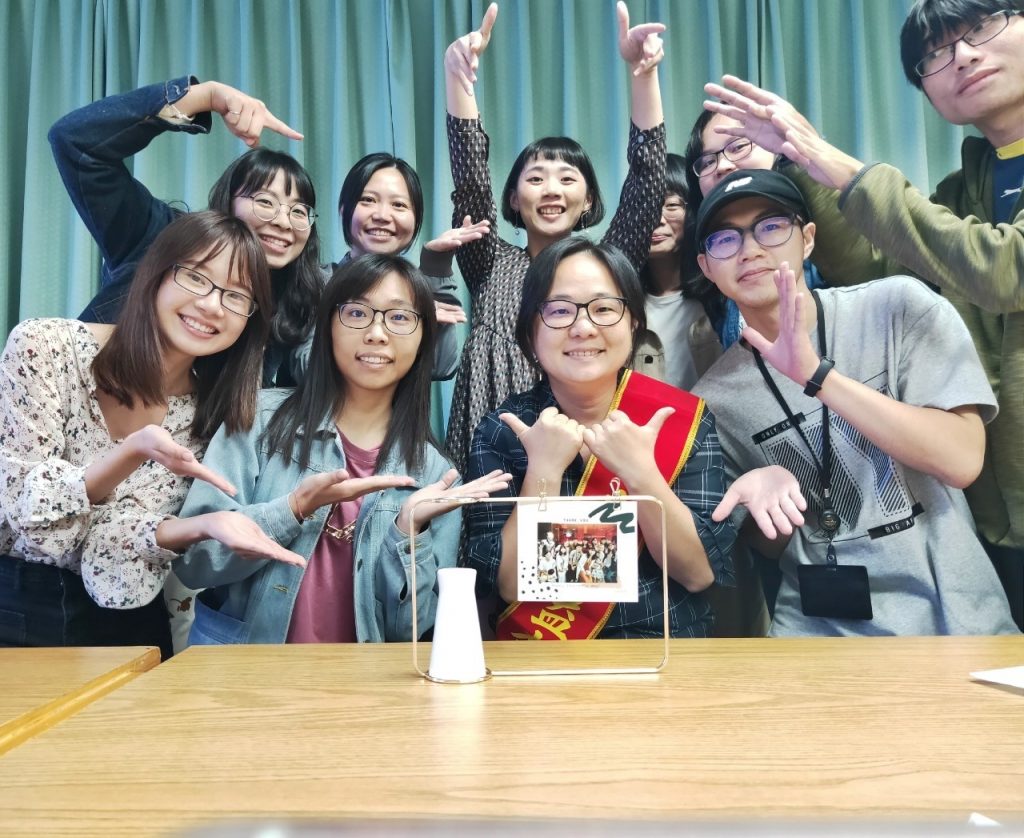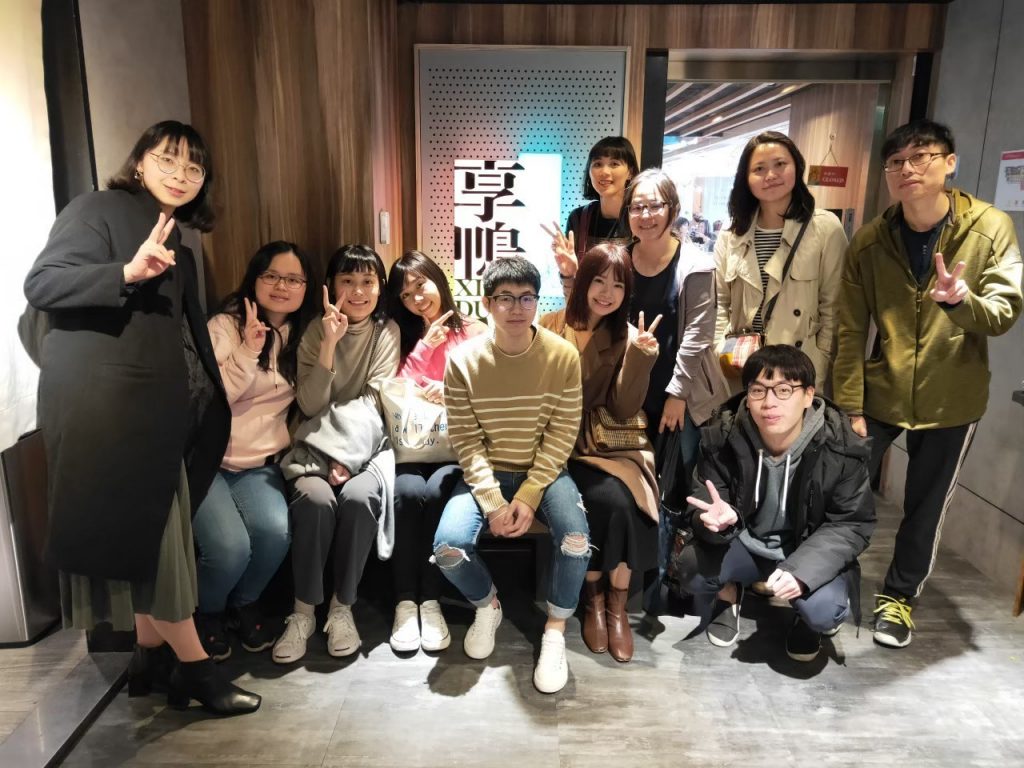
專長
纖毛相關疾病與癌症之研究、中心粒生理功能、細胞生物學、訊息傳遞
辦公室
生物醫學大樓 六樓 R606 室
電話
886-2-2826-7117
Email
wangwj@nycu.edu.tw
ORCiD
0000-0001-9733-0839


經歷
2020迄今
2014-2020
2008-2014
2006-2007
2005-2006
國立陽明交通大學 生化暨分子生物研究所 副教授
國立陽明大學 生化暨分子生物研究所 助理教授
Memorial Sloan-Kettering Cancer Center Cell Biology program 博士後研究
中央研究院 生物化學研究所 博士後研究
國立臺灣大學 分子醫學研究所 博士後研究
榮譽
2019-2024
2016, 2018, 2019, 2023
2020
2015, 2016, 2019, 2020
2016, 2019
2016, 2019
2014
2008
國立陽明交通大學醫學系學生網路教學評估之優良教師
國科會「優秀年輕學者研究計畫」
科技部吳大猷紀念獎
國立陽明大學良師益友導師
財團法人沈力揚教授醫學教育獎學紀念基金會講師級研究與進修獎助
優秀年輕學者研究計畫」(三年)
科技部補助大專校院延攬特殊優秀人才
長庚大學傑出校友獎
指導學生獲獎
2024
2023
2023 2023 2022 2022 2022 2022 2022 2022 2022 2022 2022 2022 2021 2021 2021 2021 2021 2021
2021
2020
2020
2020
2020
2020
2020
2020
2019
2019
2019
2018
2018
2017
2017
2017
指導周柏君榮獲第38屆生醫年會李天德優秀壁報論文獎
指導林宜璇榮獲臺灣生物化學及分子生物學學會秋令營研討會口頭論文競賽第二名
指導 賴運迪 榮獲國家科學及技術委員會 111年度大專學生研究計畫研究創作獎
指導 林怡璇 榮獲國立陽明交通大學優秀論文獎比賽佳作
指導 高健涵 榮獲2022臺灣生物化學及分子生物學學會秋令營研討會口頭論文競賽第三名
指導 林怡璇 榮獲2022臺灣生物化學及分子生物學學會秋令營研討會優秀壁報特優
指導 賴運迪 榮獲111年度大專生研究計劃
指導 鄭宇雯 榮獲111年度大專生研究計劃
指導 林宜璇 榮獲2022台灣發育生物學年會口頭競賽優等獎
指導 高健涵 榮獲2022年李天德優秀論文獎
指導 高健涵 榮獲110學年度國立陽明大學博士班優秀論文獎
指導 黃筠珈 榮獲110學年度國立陽明大學生科院院長獎
指導 高健涵 榮獲2022細胞及分子生物學學會暨癌症醫學會聯合會議優秀壁報論文獎
指導 林宜璇 榮獲2022細胞及分子生物學學會暨癌症醫學會聯合會議優秀壁報論文獎
指導 蘇亭語 榮獲2021臺灣生物化學及分子生物學學會秋令營研討會優秀壁報人氣獎
指導 周柏君 榮獲2021臺灣生物化學及分子生物學學會秋令營研討會優秀壁報特優
指導 蘇亭語 榮獲2021臺灣生物化學及分子生物學學會秋令營研討會優秀壁報優等
指導 林宜璇 榮獲2021臺灣生物化學及分子生物學學會秋令營研討會優秀壁報特優
指導 林宜璇 榮獲Best Oral presentation Award. 2021 The Taiwan Biochem/MolBiol Meeting
指導 周柏君 榮獲Best Poster Award. 2021 The Taiwan Biochem/MolBiol Meeting
指導 賴運迪 榮獲110年度大專生研究計劃
指導 高健涵 榮獲2020 臺灣生物化學及分子生物學學會秋令營研討會 優秀壁報獎
指導 羅芊卉 第13屆台灣女科學家「孟粹珠獎學金 」
指導 羅芊卉 108學年度國立陽明大學博士班 優秀論文獎
指導 黃韋勳 108學年度國立陽明大學生科院院長獎
指導 羅芊卉 2020 AS-TIGP Research Performance Fellowship
指導 羅芊卉 2020 AS-TIGP Presidential Fellowship
指導 羅芊卉 27屆細胞及分子生物新知研討會,徐千田優秀論文獎,佳作
指導 高健涵 第九屆國際細胞自噬研討會研討會獲壁報報論文獎
指導 黃芊詠 榮獲陽明大學研究生論文競賽壁報論文佳作。
指導 林詠萱 榮獲陽明大學研究生論文競賽壁報論文優等獎。
指導 羅芊卉 獲得科技部補助博士班出國參加 The ASCB/EMBO 2018 Annual meeting in San Diego, CA.
指導 蘇亭語 獲得陽明大學生科院院長獎
指導 周柏君 獲得陽明大學生科院院長獎
指導 羅芊卉 榮獲陽明大學尹詢諾優秀論文獎比賽佳作
指導 周柏君 榮獲第25屆中華民國細胞及分子生物學學會優秀壁報論文獎
研究方向:探索中心粒纖毛複合體在健康與疾病中的作用
本實驗室專注於研究 中心粒纖毛複合體(centriole-cilium complex) 在細胞中的重要功能,並探討其應用於癌症治療的潛力。該複合體由 中心粒(centriole) 和 初級纖毛(primary cilia) 組成,已知中心粒與許多蛋白共同組成中心體(centrosome),這個構造在調控細胞分裂、運動及訊號傳導具有關鍵作用,並與腫瘤的生成及惡化直接相關。此外,中心粒也能作為 基體(basal body),負責初級纖毛的形成與功能維持。初級纖毛作為細胞感知外界環境信號的重要感受器,其結構或功能異常往往與多種 遺傳性疾病相關,這使其成為生物醫學研究的重要領域。
本實驗室的幾個研究方向包括:
(一) 初級纖毛發生(ciliogenesis)及纖毛相關功能的調控
實驗室應用半定量蛋白質譜和超高解析度顯微鏡技術,成功找出了多種參與初級纖毛形成及功能維持的關鍵蛋白,接下來,我們將深入探討這些蛋白的具體作用,以闡明初級纖毛缺陷與纖毛性疾病的關連。。
(二) 中心粒纖毛複合體在腦部發育相關疾病中的角色 實驗室與臨床醫師合作,我們研究中心粒纖毛複合體在大腦和小腦發育中的角色。結果顯示,該複合體的異常不僅會影響腦部發育,還可能導致多種大腦疾病與腦瘤的生成。我們希望透過研究這些異常機制,未來能針對與中心粒纖毛複合體異常相關的腦病變開發出有效的治療策略。
(三)探討中心體在細胞自噬(Autophagy)調控及癌症中的作用 我們實驗室發現,許多調控細胞自噬的重要蛋白同時也是中心體蛋白,顯示中心體在自噬過程中扮演關鍵角色。由於細胞自噬在腫瘤的生成及惡化中有重要功能,我們希望透過研究中心體對細胞自噬的調控機制,進一步應用於癌症治療,開發新的且有效的治療方法。
Research Focus: Exploring the Role of the Centriole-Cilium Complex in Health and Disease
Our laboratory focuses on studying the crucial functions of the Centriole-Cilium Complex in cells and exploring its potential applications in cancer therapy. This complex consists of centrioles and primary cilia. It is known that centrioles, together with pericentriolar materials, form the centrosome, a structure that plays a key role in regulating cell division, movement, and signal transduction. It is also directly associated with the development and progression of tumors. Moreover, centrioles can serve as basal bodies, responsible for the formation of primary cilia. Primary cilia act as important sensors for cells to perceive environmental signals. The structural or functional defects in cilia are often linked to genetic diseases, making this a critical area of biomedical research.
Our laboratory’s research focuses on the following directions:
- The Role of the Centrosome in Autophagy Regulation and Cancer
Our lab has discovered that many proteins regulating autophagy also locate at the centrosomes, indicating that the centrosome plays a key role in the autophagy regulation. Since autophagy has an important function in tumor development and progression, we aim to study the regulatory mechanisms of autophagy by the centrosome and apply these findings to cancer therapy, ultimately developing novel and effective therapeutic approaches. - The Regulation of Ciliogenesis and Cilia-Related Cellular Functions
Using SILAC-based proteomics and super-resolution microscopy techniques, our lab has successfully identified many key proteins involved in the formation and maintenance of primary cilia. Moving forward, we will delve deeper into the specific functions of these proteins to elucidate the connection between primary cilia defects and ciliopathies. - The Role of the Centriole-Cilium Complex in Brain Development and Related Diseases
In collaboration with clinical doctors, we are investigating the role of the Centriole-Cilium Complex in brain and cerebellum development. Our results indicate that abnormalities in this complex not only affect brain development but may also lead to brain tumors. Through studying these abnormal mechanisms, we aim to develop effective therapeutic strategies in the future for brain pathologies associated with Centriole-Cilium Complex dysfunction.
研究著作
Lo CH, Liu Z, Chen S, Lin F, Berneshawi AR, Yu CQ, Koo EB, Kowal TJ, Ning K, Hu Y, Wang WJ, Liao YJ, Sun Y*. Primary cilia formation requires the Leigh syndrome-associated mitochondrial protein NDUFAF2. Journal of Clinical Investigation. 2024 Jul 1;134 (13):e175560. doi: 10.1172/JCI175560.
Lin IH, Li YR, Chang CH, Cheng YW, Wang YT, Tsai TS, Lin PY, Kao CH, Su TY, Hsu CS, Tung CY, Hsu PH, Ayrault O, Chung BC, Tsai, JW, Wang WJ*. Regulation of Primary Cilia Disassembly Through HUWE1-Mediated TTBK2 Degradation Plays a Crucial Role in Cerebellar Development and Medulloblastoma Growth. Cell Death and Differentiation Jun 15. doi: 10.1038/s41418-024-01325-2.
Tsai MH, Ke HC, Lin WC, Nian FS, Huang CW, Cheng HY, Hsu CS, Granata T, Chang CH, Castellotti B, Lin SY, Doniselli FM, Lu CJ, Franceschetti S, Ragona F, Hou PS, Canafoglia L, Tung CY, Lee MH, Wang WJ, Tsai JW. Novel lissencephaly-associated NDEL1 variant reveals distinct roles of NDE1 and NDEL1 in nucleokinesis and human cortical malformations. Acta Neuropathol. Acta Neuropathol. 2024 Jan 9;147(1):13. doi: 10.1007/s00401-023-02665-y.
Singh S, Yeat NY, Wang YT, Lin SY, Kuo IY, Wu KP, Wang WJ, Wang WC, Su WC, Wang YC, Chen RH. PTP23 ubiquitination by WDR4 suppresses EGFR and c-MET degradation to define a lung cancer therapeutic target. Cell Death Dis. 2023 Oct 11;14(10):671. doi: 10.1038/s41419-023-06201-4.
Chiu TY, Lo CH, Lin YH, Lai YD, Lin SS, Fang YT, Huang WS, Huang SY, Tsai PY, Yang FH, Chong WM, Wu YC, Tsai HC, Liu YW, Hsu CL, Liao JC*, Wang WJ*. INPP5E regulates TCR/CD3 complex recruitment to the immune synapse through manipulating phospholipid distribution. Communications Biology. 2023 Sep 5;6(1):911. doi: 10.1038/s42003-023-05269-0.
Chen YH, Chen HH, Wang WJ, Chen HY, Huang WS, Kao CH, Lee SR, Yeat NY, Yan RL, Chan SJ, Wu KP, Chen RH*. TRABID inhibition activates cGAS/STING-mediated anti-tumor immunity through mitosis and autophagy dysregulation. Nature Communications. 2023 May 26;14(1):3050. doi: 10.1038/s41467-023-38784-z.
Kao CH, Su TY, Huang WS, Lu XY, Jan WN, Huang HH, and Wang WJ*. TFEB- and TFE3-dependent autophagy activation supports cancer proliferation in the absence of centrosomes. Autophagy. 2022 Mar 22;1-21. doi: 10.1080/15548627.2022.2051880.
Fan JR, You LR, Wang WJ, Huang WS, Chu CT, Chi YH, Chen HC. Lamin A-mediated nuclear lamina integrity is required for proper ciliogenesis. EMBO Report. 2020 Aug 19:e49680. doi: 10.15252/embr.201949680.
Chi HC, Tsai CY, Wang CS, Yang HY, Lo CH, Wang WJ, Lee KF, Lai LY, Hong JH, Chang YF, Tsai MM, Yeh CT, Wu CH, Hsieh CC, Wang LH, Chen WJ, Lin KH. DOCK6 promotes chemo- and radioresistance of gastric cancer by modulating WNT/β-catenin signaling and cancer stem cell traits. Oncogene. 2020 Aug 4. doi: 10.1038/s41388-020-01390-0.
Chong WM, Wang WJ, Lo CH, Chiu TY, Chang TJ, Liu YP, Tanos B, Mazo G, Tsou MB, Jane WN, Yang TT, Liao JC. Super-resolution microscopy reveals coupling between mammalian centriole subdistal appendages and distal appendages. Elife. 2020 Apr 3; 9. pii: e53580. doi: 10.7554/eLife.53580.
Tsai MH, Muir AM, Wang WJ, Kang YN, Yang KC, Chao NH, Wu MF, Chang YC, Porter BE, Jansen LA, Sebire G, Deconinck N, Fan WL, Su SC, Chung WH, Almanza Fuerte EP, Mehaffey MG; University of Washington Center for Mendelian Genomics, Ng CC, Chan CK, Lim KS, Leventer RJ, Lockhart PJ, Riney K, Damiano JA, Hildebrand MS, Mirzaa GM, Dobyns WB, Berkovic SF, Scheffer IE, Tsai JW, Mefford HC. Pathogenic variants in CEP85L cause sporadic and familial posterior predominant lissencephaly. Neuron. 2020 Apr 22; 106(2): 237-245.e8. doi: 10.1016/j.neuron.2020.01.027.
Huang KC, Wang ML, Chen SJ, Kuo JC, Wang WJ, Nhi Nguyen PN, Wahlin KJ, Lu JF, Tran AA, Shi M, Chien Y, Yarmishyn AA, Tsai PH, Yang TC, Jane WN, Chang CC, Peng CH, Schlaeger TM, Chiou SH. Morphological and Molecular Defects in Human Three-Dimensional Retinal Organoid Model of X-Linked Juvenile Retinoschisis. Stem Cell Reports. 2019 Nov 12; 13(5): 906-923. doi: 10.1016/j.stemcr.2019.09.010.
Lo CH, Lin IH, Yang TT, Huang YC, Tanos BT, Chou PC, Chang CC, Tsay YG, Liao JC, Wang WJ. Phosphorylation of CEP83 by TTBK2 is necessary for cilia initiation. J Cell Biol. 2019. Aug 27. pii: jcb.201811142. doi: 10.1083/jcb.201811142.
Chang CH, Zanini M, Shirvani H, Cheng JS, Yu H, Feng CH, Mercier AL, Hung SY, Forget A, Wang CH, Cigna SM, Lu IL, Chen WY, Leboucher S, Wang WJ, Ruat M, Spassky N, Tsai JW, Ayrault O. Atoh1 Controls Primary Cilia Formation to Allow for SHH-Triggered Granule Neuron Progenitor Proliferation. Dev Cell. 2019 Jan 28;48(2):184-199.e5.
Hsiao CJ, Chang CH, Ibrahim RB, Lin IH, Wang CH, Wang WJ, Tsai JW. Gli2 modulates cell cycle re-entry through autophagy-mediated regulation of the length of primary cilia. J Cell Sci. 2018 Dec 17;131(24)
Hsu WH, Wang WJ, Lin WY, Juang YM, Lai CC, Liao JC, and Chen HC. Adducin-1 is essential for spindle pole integrity through its interaction with TPX2. EMBO Report. 2018 Aug;19(8). pii: e45607. doi: 10.15252/embr.201745607. Epub 2018 Jun 19.
Weng RR, Yang TT, Huang CE, Chang CW, Wang WJ, Liao JC. Super-Resolution Imaging Reveals TCTN2 Depletion-Induced IFT88 Lumen Leakage and Ciliary Weakening. J Biophys J. 2018 Jun 1. pii: S0006-3495(18)30622-2.
Yang TT, Chong WM, Wang WJ, Mazo G, Tanos B, Chen Z, Tran TMN, Chen YD, Weng RR, Huang CE, Jane WN, Tsou MB, Liao JC. Super-resolution architecture of mammalian centriole distal appendages reveals distinct blade and matrix functional components. Nat Commun. 2018 May 22;9(1):2023. doi: 10.1038/s41467-018-04469-1.
Li HR, Chiang WC, Chou PC, Wang WJ, Huang JR. TAR DNA-binding protein 43 (TDP-43) liquid-liquid phase separation is mediated by just a few aromatic residues. J Biol Chem. 2018 Apr 20;293(16):6090-6098. doi: 10.1074/jbc.AC117.001037. Epub 2018 Mar 6.
He Mu, Ye WN, Wang WJ, Sison E, Jan YN, Jan LY. Mammalian calcium activated chloride channel drives epithelium morphogenesis through control of phosphoinositides. PNAS. 2017 Dec 26;114(52):E11161-E11169. doi: 10.1073/pnas.1714448115. Epub 2017 Dec 11.
Chen HY, Wu CT, Tang CC, Lin YN, Wang WJ, Tang TK. Human microcephaly protein RTTN interacts with STIL and is required to build full-length centrioles. Nat Commun. 2017 Aug 15;8(1): 247. doi: 10.1038/s41467-017-00305-0.
Mazo G, Soplop N, Wang WJ, Uryu K, Tsou MB. Spatial Control of Primary Ciliogenesis by Subdistal Appendages Alters Sensation-Associated Properties of Cilia. Dev Cell. 2016 Nov 21;39(4):424-437.
Wang WJ, Acehan D, Kao CH, Jane WN, Uryu K, Tsou MF. 2015. De novo centriole formation in human cells is error-prone and does not require SAS-6 self-assembly. Elife26;4. pii: e10586.
Yang TT, Su J, Wang WJ, Craige B, Witman GB, Tsou MF, Liao JC. 2015. Superresolution Pattern Recognition Reveals the Architectural Map of the Ciliary Transition Zone. Sci Rep.14;5:14096.
Izquierdo D, Wang WJ, Uryu K, Tsou MF. 2014. Stabilization of cartwheel-less centrioles for duplication requires CEP295-mediated centriole-to-centrosome conversion. Cell Rep. 21;8(4):957-65.
Wang WJ, Tay HG, Soni RK, Perumal GS, Goll MG, Macaluso FP, Asara JM, Amack JD, Tsou MF. 2013. CEP162 is an axoneme-recognition protein promoting transition zone assembly at the cilia base. Nature Cell Biol. 15(6): 591-601.
Tanos BE, Yang HJ, Soni RK, Wang WJ, Macaluso FP, Asara JM, Tsou MF. 2013. Centriole-distal appendages promote membrane docking, leading to cilia initiation. Genes&Dev. 27(2): 163-8.
Wang WJ, Soni RK, Uryu K, Tsou MF. 2011. The conversion of centrioles to centrosome: essential coupling of duplication with segregation. J Cell Biol. 193(4): 727-39.
Tsou MF, Wang WJ, George KA, Uryu K, Stearns T, Jallepalli PV. 2009. Polo kinase and separase regulate the mitotic licensing of centriole duplication in human cells. Dev. Cell. 17(3): 344-354 (co-first author)
Lin YM, Chen YR, Lin JR, Wang WJ, Inoko A, Inagaki M, Wu YC, and Chen RH. 2008. eIF3k regulates apoptosis in epithelial cells by releasing caspase 3 from keratin-containing inclusion. J Cell Sci. 121(Pt 14): 2382-93.
Wang WJ, Kuo JC, Ku W, Lee YR, Lin FC, Chang YL, Lin YM, Chen CH, Huang YP, Chiang MJ, Yeh SW, Wu PR, Shen CH, Wu CT, and Chen RH. 2007. The tumor suppressor DAPK is reciprocally regulated by tyrosine kinase Src and phosphatase LAR. Mol. Cell. 27(5): 701-16. (selected as “The Editors’ choice in Sci. STKE,” 2007. Reciprocal regulation of DAPK. Issue 403, p.331)
Kuo JC, Wang WJ, Yao CC, Wu PR, and Chen RH. 2006. The tumor suppressor DAPK inhibits cell motility by blocking integrin-mediated polarity pathway. J Cell Biol. 172(4): 619-31.
Chen RH, Wang WJ, and Kuo JC. 2006. The tumor suppressor DAP-kinase links cell adhesion and cytoskeleton reorganization to cell death regulation. J Biomed Sci. 13(2): 193-199.
Chen CH, Wang WJ, Kuo JC, Tsai HC, Lin JR, Chang ZF, Chen RH. 2005. Bidirectional signals transduced by DAPK-ERK interaction promote the apoptotic effect of DAPK. EMBO J. 24(2): 294-304.
Wang WJ, Kuo JC, Yao CC, Chen RH. 2002. DAP-kinase induces apoptosis by suppressing integrin activity and disrupting matrix survival signals. J Cell Biol. 159(1): 169-79.
Lin KH, Wang WJ, Wu YH, Cheng SY. 2002. Activation of antimetastatic Nm23-H1 gene expression by estrogen and its alpha-receptor. Endocrinology. 143(2): 467-75.
